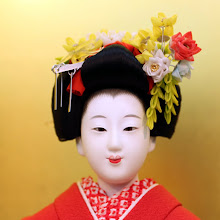In China a writer named Lu Yu wrote a Treatise on Tea that described the proper preparation and cultivation of tea. He belonged to a religion that would later be known in Japan as Zen Buddhism. Many of his ideas would later be incorporated into Japan’s tea ceremony.
Tea as a matter of ceremony did not truly develop until the 12th century when a new type of tea was introduced called matcha. This tea was a powdered green tea which was produced from the same plant as black tea but it was unfermented. This tea became very popular in Buddhist temples throughout the 12th century and by the 13th century the samurai had begun preparing and drinking matcha. It is from these beginnings that the tea ceremony developed.
The meaning behind the tea ceremony can be different for many but perhaps one of the most well known meanings of the tea ceremony was laid out by Sen no Rikyu. He introduced the concept of ichi-go ichi-e which means one time, one meeting. The idea was the each meeting between people was something to be treasured because that meeting could never be recreated.
The tea ritual itself is very subdued by bound by tradition. There two schools the Omotesenke and Urasenke which have evolved and created their own rituals for the tea ceremony. The ceremony is so deliberate that even the washing of the utensils is done with prescribed movements and in front of the guests. The tea ceremony must be performed in a tea house, rather than a tea room and there is usually very little conversation to take place.
These ceremonies can last anywhere from 1 hour to 5 hours depending on the type of ceremony performed. The host of the ceremony will typically wear a kimono while the guests may choose to wear kimonos or other types of subdued formal wear. Since this ceremony is so steeped in history and tradition the objects used during the tea ceremony are often irreplaceable antiques that have been passed down for generations.



No comments:
Post a Comment